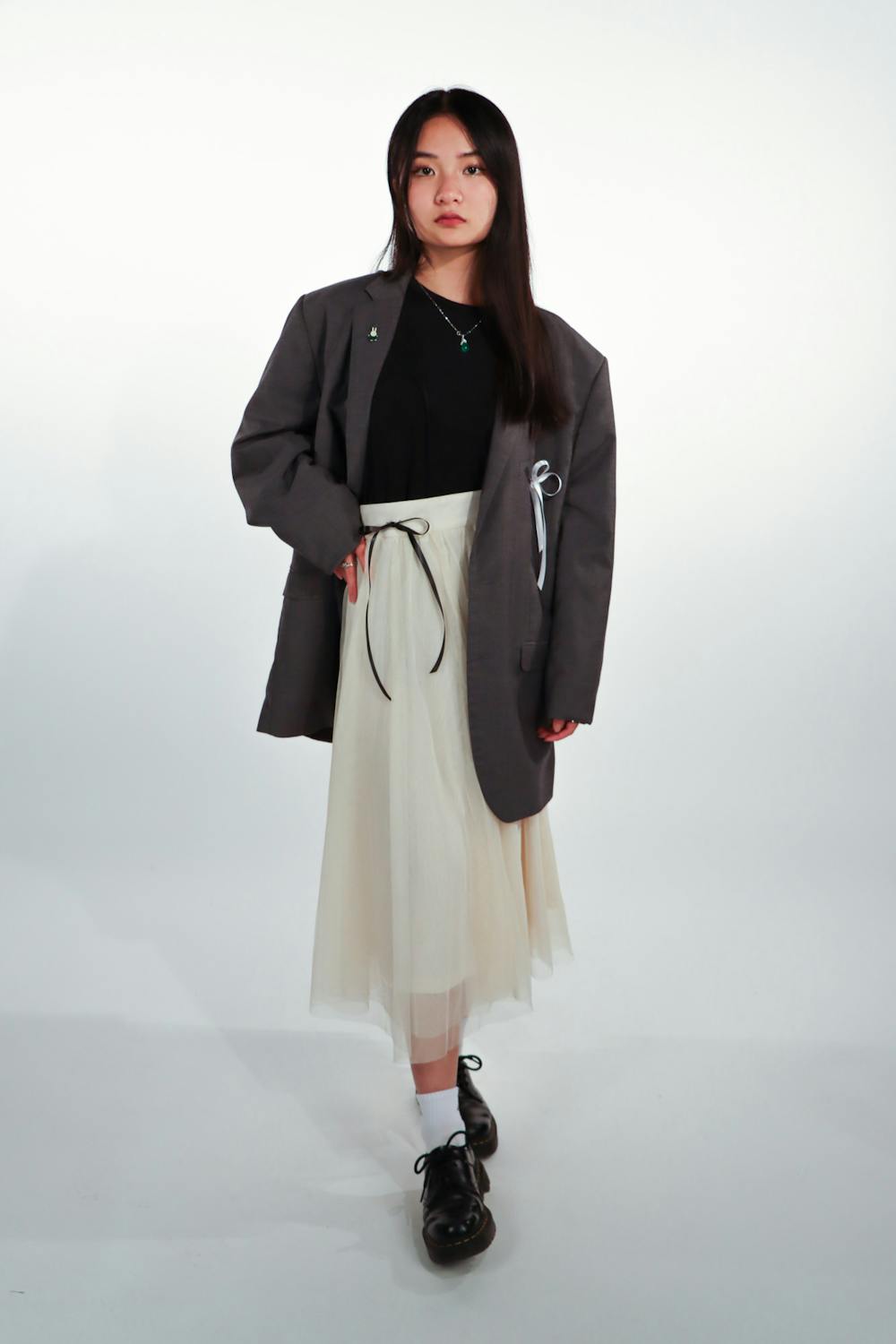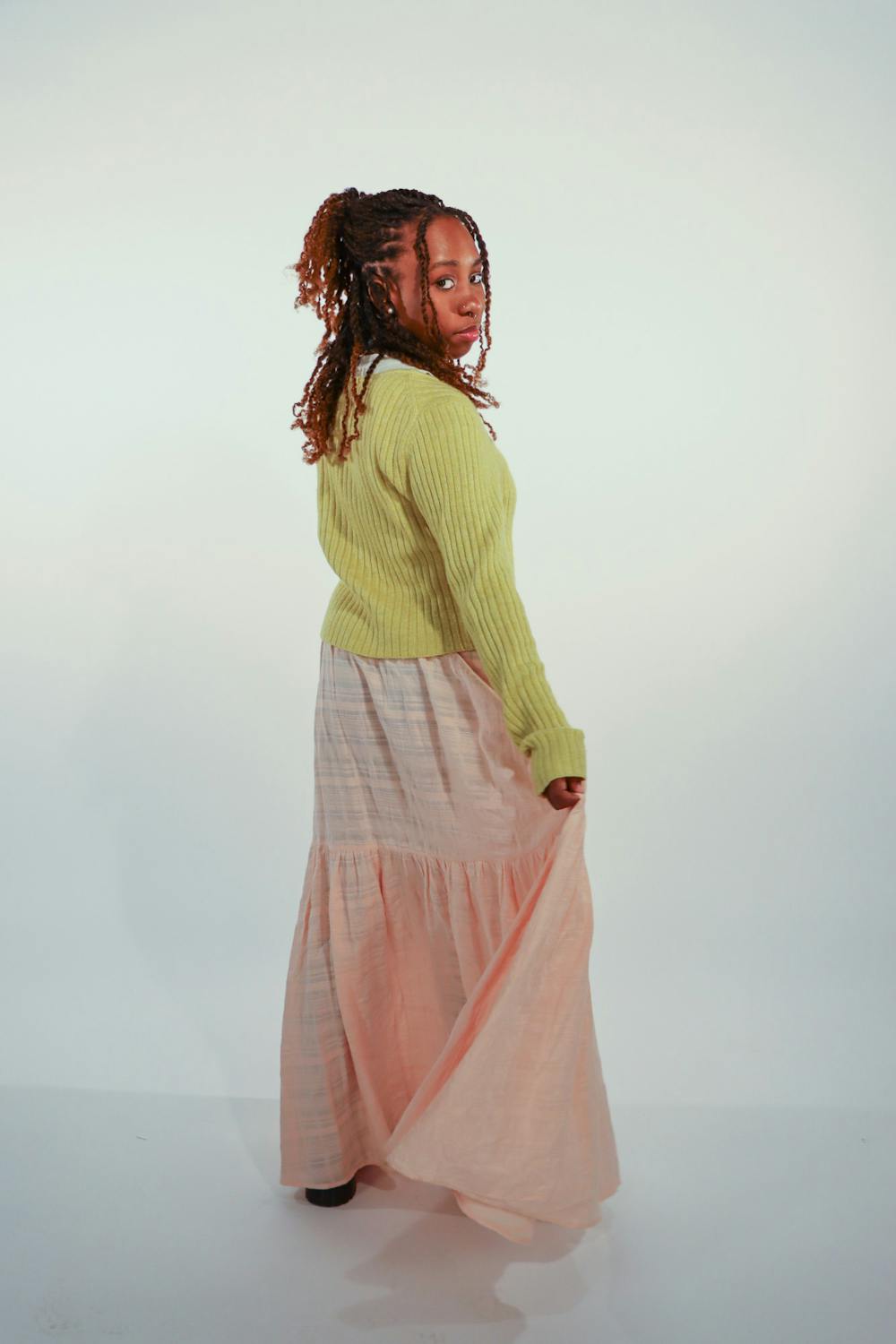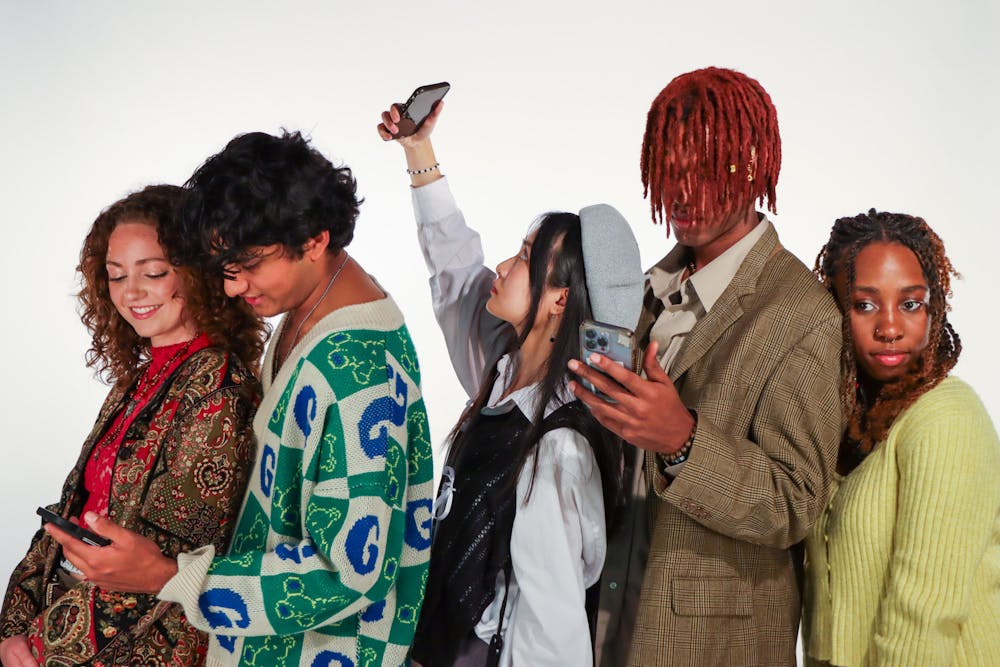The concept of fashion "cores" has skyrocketed in popularity with the growing prominence of social media. It's not uncommon to see Pinterest boards curated to encapsulate a specific aesthetic — perhaps you've even made one yourself. The desire to fit a certain core has its appeal, whether people just want to give off a certain vibe or even find online communities of others who share their same interests. Regardless of one's purpose for pursuing a core, we are all looking to achieve a common goal: to find our personal sense of style. Some of the most popular cores are simply fashion styles that follow the same set of general aesthetic rules, but other cores are extensions of larger online communities that work to embody an entire lifestyle.
Maximalism is, quite simply, an aesthetic of excess. More is more, and over-the-top is never quite enough. Maximalism combines a smorgasbord of colors, textures and patterns to create an eclectic fashion style that appeals to those with a desire to stand out. If you think a neon pink puffer jacket, orange checkered pants, multicolored Docs and a gingham scarf don't go together, think again. There is a maximalist enthusiast who would wholeheartedly disagree. Anything goes as long as you wear it with confidence, so don't be afraid to mix it up.

Achromatic simply means "without color". However, this is not synonymous with "without style". Known for playing with shades of white, gray and black, achromatic looks are appreciated for their cohesive color palette, or lack thereof, and for their inherent elegance. For those who are new to high fashion, leaning into an achromatic aesthetic can be a great way to explore interesting patterns and textures without becoming overwhelmed by an excess of colors from which to choose. More experienced dressers can take advantage of the achromatic to create visually stunning outfits whose patterns and textures can fully shine in the absence of color.
Many popular aesthetics are extensions of broader communities, many of which have found online niches on platforms such as Instagram and TikTok. These communities embrace the aesthetic beyond the realm of fashion and delve into the worlds of pop culture, interior design and practically any other form of consumerism or self expression. For example, someone who wishes to personify the dark academia aesthetic may dress in dark academia fashion but also read classic literature, study Latin and drink black coffee seven times a day.
Dark academia seeks to emulate aesthetics reflective of higher education, the arts and literature — or rather the idealized version. Rooted in fashions of the 1930s and 1940s, the closet of a dark academia dresser will be filled with classic pieces such as turtlenecks, blazers, pleated trousers and loafers. If it looks straight out of "Peaky Blinders" or "Dead Poets Society," it's probably dark academia.
Many people who wish to embody the dark academia aesthetic do so because such outfits give off an air of academic and intellectual prowess. Donning a trench coat and a pair of leather Oxford shoes is a bit more practical than carrying a copy of your favorite Dostoyevsky novel everywhere you go. Unfortunately, there is a dark side to the aptly named "dark academia." While the aesthetic seeks to romanticize education and a perpetual state of philosophical melancholy, it also romanticizes unhealthy byproducts of academia such as caffeine addiction, burnout and substance abuse, particularly alcoholism. Dark academia fashion is also heavily saturated by tailored and expensive pieces, resulting in criticisms of elitism.
Cottagecore is one of the most popular fashion aesthetics circulating on TikTok, with #cottagecore reaching well over 15 billion views. The aesthetic takes cues from rural European life, featuring flowing and feminine pieces known for their light color schemes and frequent use of florals. Cottagecore romanticizes a simple life, complete with provincial activities such as making bread, gardening and thrifting vintage furniture.

Similarly to dark academia, cottagecore is not without its negative aspects. The online community surrounding the aesthetic is heavily dominated by women, and the rural way of life promoted by cottagecore often includes shades of "tradwife" ideology. The word "tradwife" describes a woman who believes in and practices traditional gender roles within a marriage. While there is absolutely nothing wrong with a woman desiring a classic family structure and traditional values, the "tradwife" mentality is often paired online with alt-right ideas surrounding femininity, particularly the rejection of modern feminism.
Normcore is a tongue-in-cheek aesthetic that embraces the simple, ordinary and mainstream. Wearers opt for a lack of individuality, often donning familiar pieces such as hoodies, t-shirts, sweatpants and sneakers. While some normcore enthusiasts purposefully put together simple outfits either for comfort or fashion appeal, or intentional lack thereof, others embrace normcore looks simply because they don't feel confident dressing in a way that subverts the mainstream. The diverse and seemingly endless world of fashion can be very overwhelming, especially for those who have not found their own sense of style.
Congratulations, you now have access to adult money and are ready to start shopping for outfits that make you feel like you. But where do you start? How does one go about finding individuality in their dress when it can be so daunting? For those who are new to the world of fashion or who are less confident with putting together unique outfits, the power of simple layering cannot be overstated. An oversized sweater can turn the age-old sweatpants and Chuck Taylors combo into something a bit more exciting. There's nothing more basic than a black t-shirt — until you pair it with a collared button-up and some tailored pants. A few well-chosen accessories like sunglasses, a set of rings or an eye-catching necklace can also be instrumental in taking an outfit from something you would wear to take your finals and turning it into interesting streetwear.
Humans are inclined to seek community with others who have shared interests and values, resulting in fashion aesthetics transcending simply being clothing and accessories. Aesthetics are seen by many as a way of life, an idealized version of oneself. Our obsession with maintaining a certain image can be all-consuming, and it can also be extremely pricey. A single piece of well-made clothing can run the wearer up hundreds of dollars, a feat of sticker shock that most wearers cannot afford. In response to those who wish to wear their desired aesthetic but who lack the budget to do so, fast fashion companies such as Shein have created monstrous collections of pieces that cater to every aesthetic one could imagine. These pieces are inexpensive, poorly made and made to exploit the wallets of broke fashionistas who simply cannot afford to shop sustainably.
The market for fast fashion to achieve an aesthetic is certainly understandable, especially with growing pressure from social media to always present the perfect life. The rise of online aesthetic communities has come with cripplingly strict social expectations when it comes to fashion, but few people are able to shell out thousands to curate closets filled with ethically sourced clothes that fit their style. However, it is vital that consumers are aware of the impact of the companies that they choose to support. Apart from being notorious for overworking and underpaying their employees, Shein has been under scrutiny lately for allegedly stealing designs from independent artists and mass-producing them to be sold at extremely low prices. Clothing is deemed a utility item, and it is therefore not under as many protections as other art forms. Nonetheless, multiple artists have sued Shein for indisputably ripping off their designs and selling them for a fraction of the price — and a fraction of the quality.
With sustainable fashion becoming more and more pricey each year, consumers are constantly looking for more affordable ways to dress how they want. Luckily, fast fashion is not the only way to achieve this. Thrifting has lately been praised as an excellent alternative, and it has quickly become a social phenomenon. Thrifters enjoy the thrill of the hunt, allowing them to piece together unique outfits that they never could have predicted before stepping into the shop. Estate sales are fantastic sites to find more classic clothing, things that would categorically fall under the academia umbrella of aesthetics. And while some people may be intimidated by making or tailoring their own clothes, upcycling remains a great way to turn dated pieces into something fresh.
Embracing cores can be spectacularly fun. It's edifying to find communities of others who enjoy the same things that you do, but it can be very easy to lose your sense of individuality in the process. The obsession with flawlessly encapsulating a fashion aesthetic can come with a lot of pressure that ultimately leaves you wondering, "Is this really me, or am I just copying how others have said I'm supposed to look?" There is no right or wrong way to dress, and there is freedom and excitement in mixing and matching pieces that fit your personal style, regardless of how they fit into a socially agreed upon aesthetic. At its core, the beauty of self-expression is in its diversity.
Creative Director: Hui Penaflor
Styled by: Toni DeLoach, Hui Penaflor and Kylee Strickfaden
Clothing sourced from stylists' closet



